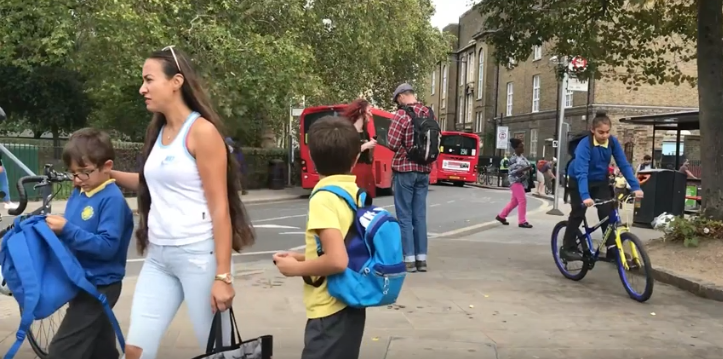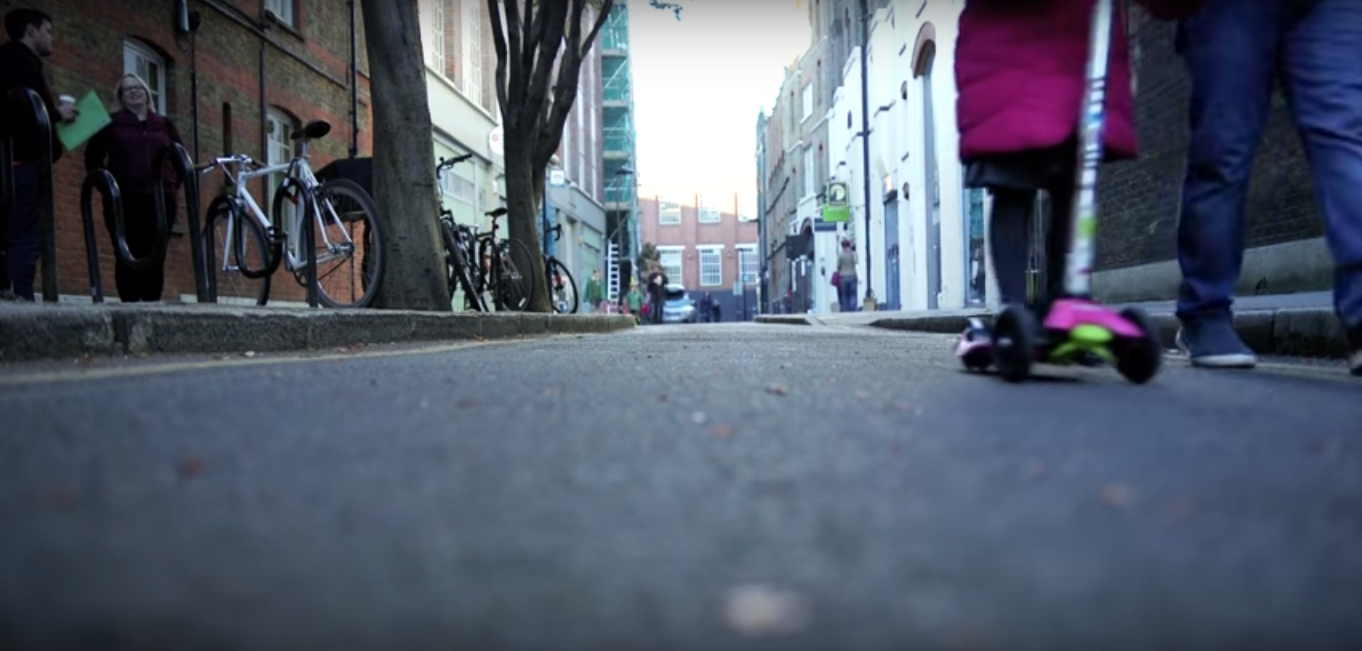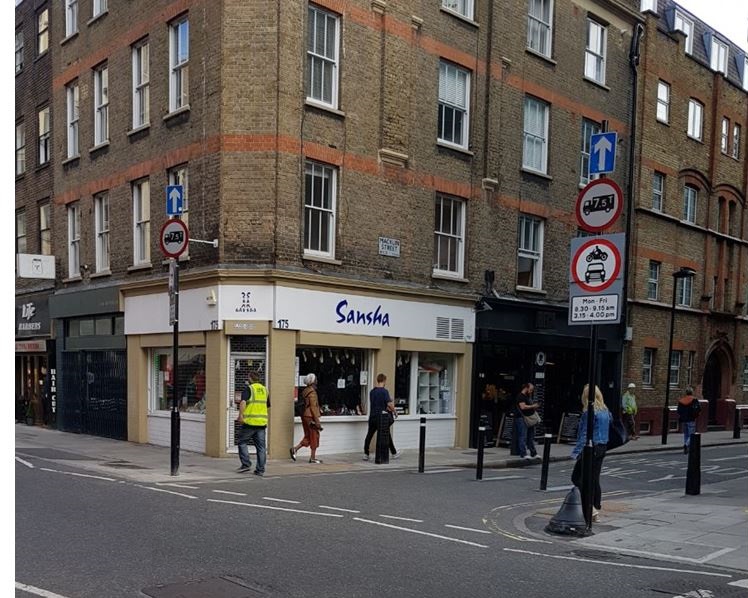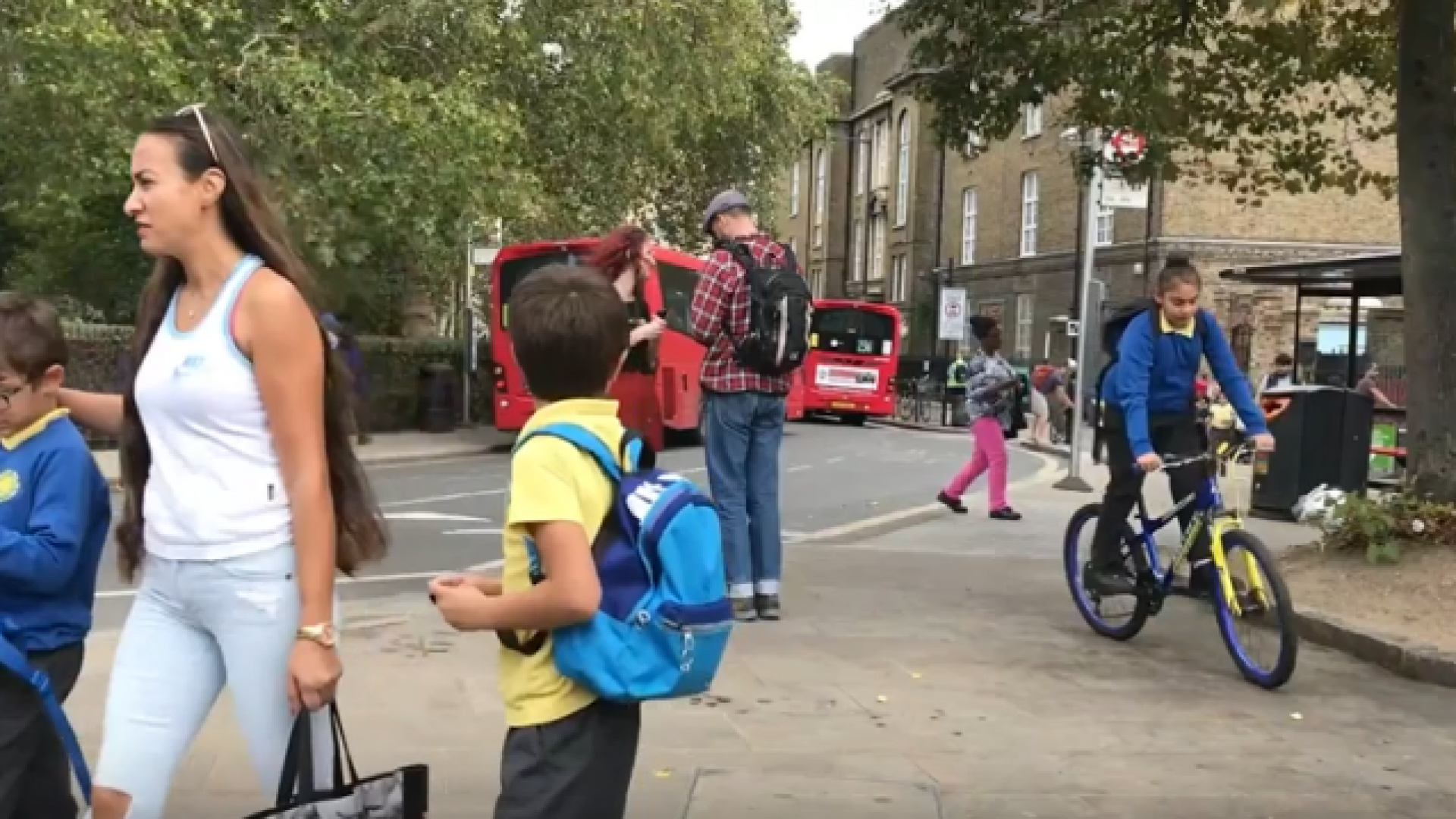Existing School Street schemes have shown that enlisting the full involvement of the school and community is key to success. Cohorts of well informed parents and residents will be the best advocate and help make the case for when the consultation comes.
Build a momentum
Use any opportunities available to talk about it. Raise it at meetings with the school leadership and teaching staff. Ask to speak during an assembly, organise meetings with local resident associations. It’s quite likely that they too have had enough of the daily grotesque ballet of cars blocking their parking bays, creating traffic jams and making the area where they live, a nightmare every morning and afternoon. If they express an interest, make sure you keep them up to speed so they don’t feel this is imposed upon them but they are full participant to a positive change.
Ask councillors to do the school run, or stand at the school gate one morning. Ask the police and traffic wardens to come regularly and speak to the parents who insist on parking just outside the school gate or on pavements near by. Make it clear that this is not an acceptable behaviour and explain why as calmly as possible. Ask the school to support you by regularly communicating with parents via newsletters or other means about the danger of pollution, road danger reduction and passive travel.
Discuss at PTA meetings, at governing body level or set up a Steering Group with parents and the school leadership to approach the council with a request for a solution. School Streets are not possible for all streets, however this should not deter you from trying to find a solution. If your school is not too far from other schools, it may be a good idea to join forces with them.
School fairs are a great way to start the conversation with the wider school with a display of examples and information over health benefits and road danger reduction. Ask parents to sign a pledge, showing their support as this will be important when the issue is brought to the attention of local councillors. Find some examples on our resources page to give you ideas.
Make the case
Involve the children. Not only are they likely to get it straight away but they can be the most powerful campaigners for change to the most reluctant parents. They can continue the discussion at home, from the back seat of the family car, even. Harvest the pester power!
There are lots of activities school can do with the children around pollution and health to support the demand for an intervention such as School Streets. They can carry out counts outside the school gate and learn about data. They could do a survey and analyse the results, linking this project to the Maths or Science curriculum. They could produce some art pieces, working on making a campaign with logo design, slogan and messages.
Set up a Walking School Bus or get a few families cycling the school run together, there is definitively strength in number. Even if not done every day, this can send a very strong message showing that there is a demand for a more active travel to school that needs to be met.
Dig out your local authority’s plan for walking and cycling and discuss progress with councillors, or challenge the claims set out if they do not match the reality you experience. And keep enquiring! Councillors have hundreds of things on the go at any given time, so make sure you keep your demand for a School Street towards the top of the agenda.
Get your school to register with accreditation schemes that reward schools that are actively encouraging children to be more active. In London, the STARS programme has also lots of resources to steer your school to be more active.
Find out if your council has a School Travel Officer, Travel Planner, Safety Travel Officer or Road Safety Officer and start the conversation with them. It’s important to reiterate that the school is fully dedicated to seeing improvements with regard to active travel and to the health of the children and that it would support the council with a School Street scheme. Reach out to local walking and cycling organisations.
Find out more about creating Healthier School Street on our resource page.
The Technical bit
Local authorities in the UK have powers under the Road Traffic Regulation Act 1984 (s1 and s6-9) to regulate traffic and restrict access:
- to avoid danger to persons or other traffic using the road,
- to facilitate the passage on the road of any class of traffic (including pedestrians),
- to prevent the use of a road by vehicular traffic where such use is inappropriate given the street context.
A traffic management order is applied to a street around a school, temporarily restricting access to motorised vehicles. That street will in, effect, become a pedestrian and cycle only zone. Times for the restrictions are determined in agreement with the school. These can be for between 30-45 minutes and only on weekdays and term times.
Depending on the type of traffic management order, and agreement with the school, the council and the wider community, residents who live and work on a school street will be able to register free of charge for an exemption. Any blue badge holder will also be exempt. An exemption could also apply to temporary disabilities. Registration would be done online from the council’s website, just like one may do when buying a parking permit. There’s is a consultation period where residents around the school will be asked their views. This is when reaching out to them prior to the scheme going ahead will pay off.
Councils have used bollards or automatic number plate recognition (ANPR) cameras to enforce the temporary restriction. In the first instance, the council installs retractable or collapsible bollards, likely to be operated and manned by a member of the school staff. In the second instance, ANPR cameras will be fitted and any drivers entering the zone at the restricted time without an exemption are identified and sent a fixed penalty notice. The choice will depend on the budget allocated for the scheme by the council and the specifics on that particular street. In some areas, the situation is so bad that councils do not want to take any chances and go for a physical barrier like bollards. These aspects are decided in collaboration with the school and the council.
UPDATE JUNE 2022: The Statutory Guidance has now been published and ALL local authorities can now apply to the DfT to enforce school streets with moving traffic offence powers. Until recently, only London boroughs and a few Welsh local authorities could enforce school streets, and therefore use ANPR cameras.
Here’s a great video showing how can parent volunteers can organise themselves to help monitor the closure point where ANPR cameras are not used.
We are pleased to see this change, finally and have campaigned along with others to enquire about this apparent lack of parity with London boroughs. We wrote a few times to the Department of Transport since February 2020 to enquire about this and so did Ruth Cadbury, MP for Brentford and Isleworth and Chair of the All Party Parliamentary Walking and Cycling Group on 7 May 2020. The reply so far went from: “The Government has no current plans to enable local authorities in England outside London to enforce moving traffic offences” to, “we are giving thought to the role these powers could play in helping to deliver recovery plans.” The Government recognised there was an even more pressing need within the context of Covid-19, to enable parents to choose an alternative to public transport to do the school run. In June 2021, a spokesperson for the Department for Transport announced those powers will be in place from December 2021, then for June 2022. This meant councils everywhere will be able to enforce using ANPR!
New DfT compliant signs informing drivers of the restrictions will be added before the entrance of the school street. Some would have flashing lights during the restriction period. Some schemes enlisted the help of the police at the beginning. Whether with bollards or cameras, there are ways to allow vehicles already parked in the street before the times of operation to exit the street without incurring a fixed penalty notice.
Other boroughs who trialled this option have introduced an Experimental Traffic Management Order, to bring this change into force for a period up to several months. At the end of this period, the project is evaluated, and a decision made as to whether the scheme should be made permanent, through a Traffic Management Order (TMO) or Traffic Regulation Order (TRO) outside London. Others have gone straight to a TMO/TRO.
Evaluation reports from earlier schemes, have shown that motorised traffic not only decreases on the school street where the scheme has been implemented, but also on surrounding streets. This suggests a change in behaviour with people swapping mode of transport to active travel.



